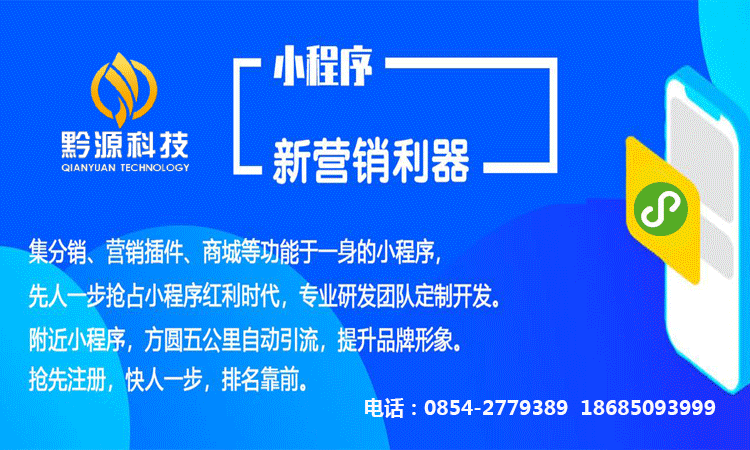
Click
the blue text above
to follow us


The IoT platform is a super track.
BAT, Xiaomi, Huawei, and telecom operators have all entered the fray to vie for the top spot. Relevant data indicates that as of 2020, there are as many as 1,600 IoT platform manufacturers in China, with new startups continuously emerging from various dimensions every year.
-
Why a Platform and Not Something Else?
The fundamental principle of a platform is universality; when products and services can be replicated at zero marginal cost, a new era will be born.
The prosperity of internet platforms essentially leverages internet technology through model innovation to solve the information asymmetry problems in certain traditional To C consumer domains (such as e-commerce, travel, social networking, real estate, dining, etc.), while simultaneously developing related technologies like cloud computing, big data, artificial intelligence, and middle platforms.

The IoT industry chain is long, the technology scope is broad, and fragmentation is severe, making scenario replication difficult. It also involves both the real and virtual economies, thus presenting both challenges and opportunities brought about by this wave, with implications that will be even more profound.
The IoT industry chain is typically divided into sensing layer, transmission layer, platform layer, and application layer. The technology encompasses industrial control, embedded systems, network communication, cloud computing, and graphical applications, while fragmentation is reflected in the specific demands of various industries, such as construction, manufacturing, water treatment, agriculture, environmental protection, transportation, etc., exhibiting typical To B/To G characteristics.
The question is, can we achieve zero marginal cost coverage for users across industries and scenarios, similar to the internet? This is a pseudo proposition. It is difficult for a single company to achieve this now and in the future. However, “platform” + “ecosystem” can!
Almost all major companies engaged in IoT platforms are striving to decouple hardware from applications, allowing more devices to connect and enabling more applications to be provided on top of that. Of course, many small and medium-sized manufacturers are using the concept of IoT platforms to serve application solutions for specific industries, treating it as a business to implement project-based operations.
-
Looking Around, Is There Still Opportunity?
The intersection of traditional and emerging industries, real and virtual economies, and physical and digital worlds is more likely to produce new opportunities.
Given the uniqueness of the IoT industry, internet giants can no longer simply occupy the market through technology replication capabilities, traffic monetization thinking, and capital subsidy methods; established industrial enterprises transitioning to the industrial internet also find it difficult to swiftly replicate their previous achievements in other fields based on past industry experience.
Alibaba Cloud IoT, Xiaomi IoT, and Tuya Smart primarily focus on consumer IoT, providing open SaaS cloud platforms, integrating communication modules like Wi-Fi to empower manufacturers to mass-produce new connected devices, solving the problem of bringing new devices online, applied in smart home scenarios such as common smart sockets, smart speakers, and smart microwaves. However, they struggle in the industrial internet sector, unable to replicate the advantages of the consumer appliance field, whether in products or models.
Platforms like Root Cloud (Sany Heavy Industry), Kaos (Haier), and Aerospace Cloud Network (Aerospace Science and Industry) focus on the industrial sector, providing smart manufacturing solutions to address issues such as industrial equipment operation and maintenance, as well as lean production. These platforms are typically project-based, with high costs, high thresholds, and strong demand. Moreover, they have higher requirements for platform technical capabilities and process business accumulation. However, the advantages and accumulations in project replication are limited to similar types of manufacturing scenarios, with significant differences in equipment categories and process flows across different industries, such as steel and textiles, which cannot avoid huge marginal costs.
-
How Can Startups Gain an Edge?
According to incomplete statistics, among numerous IoT platforms, 15% primarily focus on SaaS cloud services, 80% specialize in industry application solutions, and the remaining 5% are newly entered platforms focusing on hardware devices and emphasizing the completeness of functions.
Undeniably, this is determined by the fragmented demand characteristics of IoT scenarios. Major categories of scenarios can be divided into smart home (consumer IoT), smart manufacturing (industrial internet), and smart cities. Speaking of smart cities, we must mention system integration.
“System integration” is not a strange term in traditional industries; it emerged almost simultaneously with the concept of “IoT.” The Ministry of Information Industry began establishing a qualification management system for computer information systems integration in 1999, formulating and publishing the “Management Measures for Computer Information Systems Integration Qualifications.”
With technological advancements, a wave of smart hardware driven by Xiaomi around 2010 pushed the concept of IoT platforms into the spotlight. As the wave gradually calmed, the market landscape for smart hardware became clearer, with platforms like Xiaomi, Alibaba, and China Mobile’s OneNet emerging. In November 2017, with the issuance of the Industrial Internet White Paper by the Ministry of Industry and Information Technology, domestic IoT platforms became hot in industrial manufacturing scenarios, and high-profile events for industrial apps are held every year. By 2019, the concept of IoT operating systems began to be frequently mentioned, such as IOTOS, Apsys, Helium, and instruction sets. General-purpose IoT platforms supporting localization have become a hot topic.
However, “looking for nails with a hammer” is the awkward situation that IoT platform manufacturers have been facing: the C-end consumer domain is dominated by large manufacturers, and it is currently difficult to achieve profitability through SaaS; more still relies on traffic thinking and user acquisition; small-scale B-end scenarios like remote monitoring of devices and agricultural greenhouse monitoring often have small scale, difficulty in aggregation, require customization, but customers’ willingness to pay is weak, making the platform feel tasteless and regrettable, with low added value, often just combining hardware as selling devices with service.
High-value B-end medium and large scenarios or government and group businesses, such as smart buildings, smart parks, smart energy, smart campuses, have now naturally become the “darling” of many IoT platform manufacturers, namely industry application solutions. This belongs to the field of information system integration, facing customers who are integrators or clients, and is accompanied by project bidding.

Today, information system integration projects have become key to the implementation of IoT platforms in smart cities. Integration projects rarely directly use platforms to connect hardware sensing devices, and seldom use narrowband wireless transmission; they generally do not choose the manufacturer’s cloud-based IoT SaaS platforms. “Subsystems,” “local deployment,” and “wired networks” have become high-frequency terms in integration projects.
This involves considerations from the owner’s client and also relates to the process of market education. With the further development of 5G and cloud computing, the market may gradually accept cloud-based deployment and fully wireless transmission methods, and IoT platforms will gradually become standard configurations. However, “subsystems” will increasingly replace “devices,” “sensors,” and “smart hardware” as the main access objects for IoT platforms in integration projects!
Subsystems in building scenarios include elevators, fire protection, access control, BA, environmental monitoring, parking, lighting, broadcasting, and patrol; subsystems in factory scenarios include WMS, AGV, and even ERP, APS, etc. There are many specialized manufacturers in both domestic and international markets, such as OTIS and Mitsubishi for elevators; Das for access control; Honeywell and Siemens for BA; and Siasun and Kunshan for AGV; and Fuller and Weizhi for WMS. Regardless of whether in construction or industry, subsystems are independent products that essentially integrate bottom-level devices, sensors, and other electromechanical devices or data, combined with specific functional logic, forming standalone products that can operate independently to solve specific problems. In simple terms, subsystems integrate downwards and are used upwards for integration. This also aligns with the product and business logic of mature markets; the arrival of IoT platforms cannot simply disrupt everything.
The access of subsystems is significantly different from that of smart hardware or industrial equipment. In terms of process, subsystems are typically existing devices that provide ready-made interfaces, mostly in the form of SDK/API, waiting for third-party platforms to lead the integration, which is quite different from the industrial protocols, data message formats, and the manufacturers’ proactive integration with platforms; technically, the vast majority of platform architectures are designed for smart hardware, such as choosing MQTT asynchronous communication and not considering multi-language development, etc., which makes the integration with subsystem SDKs noticeably cumbersome. However, even if it is cumbersome, subsystem access can still be achieved.
In IoT platforms, while “access” is just one of the links, its importance does not mean it is everything. However, the standardization and universality of the platform is first reflected in its access capabilities. The cumbersome access of subsystems and manufacturers’ fatigue in coping with it have become significant pain points today.
Among many platform manufacturers, IOTOS is relatively unique, positioning itself more like a tool product that can provide subsystem interface protocol conversion and can also develop secondary applications tailored for industry, primarily serving B-end application manufacturers in system integration.
This type of tool product possesses openness, allowing for both extensive and limited expansion development, reducing delivery costs, facilitating rapid replication in system integration projects.
The competition among IoT platforms is fierce, yet the future is promising. With the advancement of industrial digital upgrades, IoT platforms will increasingly play a valuable role in system integration!
Source: Li Ruqiang (Reprint for sharing only, infringement will be deleted)

Want to follow us
Don’t get lost
Long press the QR code below
to recognize and follow
▼

Phone: 18685093999
Telephone: 0854-2779389
Address: Yongyang Street Office, Weng’an County

Qianyuan Technologyhas extensive experience in developing and operating mini-programs, having collaborated on numerous projects including the mini-program project for Guizhou Huieran Home Service Co., Ltd., and the mini-program development for Weng’an Huqiang Dental Clinic. It is a company that integrates software development, APP, website construction, public account and WeChat mini-program development, e-commerce, and more..